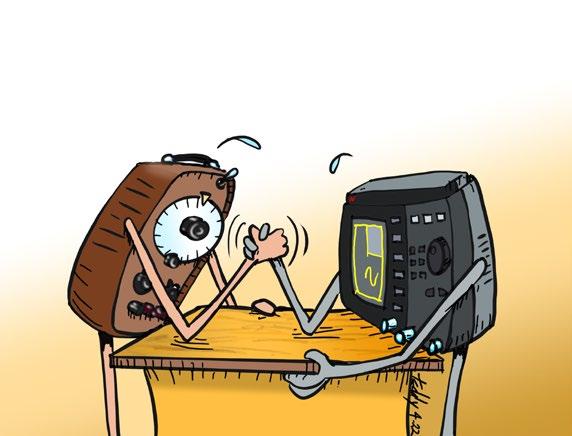
49 minute read
Cal-Toons by Ted Green
The JILA researchers have now measured frequency shifts between the top and bottom of a single sample of about 100,000 ultracold strontium atoms loaded into an optical lattice [https://www.nist.gov/physics/what-areoptical-lattices], a lab setup similar to the group’s earlier atomic clocks [https://www.nist.gov/video/strontiumclock-animation]. In this new case the lattice, which can be visualized as a stack of pancakes created by laser beams, has unusually large, flat, thin cakes, and they are formed by less intense light than normally used. This design reduces the distortions in the lattice ordinarily caused by the scattering of light and atoms, homogenizes the sample, and extends the atoms’ matter waves, whose shapes indicate the probability of finding the atoms in certain locations. The atoms’ energy states are so well controlled that they all ticked between two energy levels in exact unison for 37 seconds, a record for what is called quantum coherence.
Crucial to the new results were the Ye group’s imaging innovation [https://www.nist.gov/news-events/ news/2018/03/jila-team-invents-new-way-see-quantumworld], which provided a microscopic map of frequency distributions across the sample, and their method of comparing two regions of an atom cloud rather than the traditional approach of using two separate clocks.
Advertisement
The measured redshift across the atom cloud was tiny, in the realm of 0.0000000000000000001, consistent with predictions. (While much too small for humans to perceive directly, the differences add up to major effects on the universe as well as technology such as GPS.) The research team resolved this difference quickly for this type of experiment, in about 30 minutes of averaging data. After 90 hours of data, their measurement precision was 50 times better than in any previous clock comparison.
“This a completely new ballgame, a new regime where quantum mechanics in curved space-time can be explored,” Ye said. “If we could measure the redshift 10 times even better than this, we will be able to see the atoms’ whole matter waves across the curvature of space-time. Being able to measure the time difference on such a minute scale could enable us to discover, for example, that gravity disrupts quantum coherence, which could be at the bottom of why our macroscale world is classical.”
Better clocks have many possible applications beyond timekeeping and navigation. Ye suggests atomic clocks can
CAL-TOONS by Ted Green teddytoons@icloud.com WORLD METROLOGY DAYMETROLOGY IN THE DIGITAL ERA
JILA researchers measured time dilation, or how an atomic clock's ticking rate varied by elevation, within this tiny cloud of strontium atoms. Credit: R. Jacobson/NIST serve as both microscopes to see minuscule links between quantum mechanics and gravity and as telescopes to observe the deepest corners of the universe. He is using clocks to
look for mysterious dark matter [https:// www.nist.gov/news-events/news/2020/11/ advanced-atomic-clock-makes-better-darkmatter-detector], believed to constitute most matter in the universe. Atomic clocks are also poised to improve models and understanding of the shape of the Earth through the application of a measurement science called relativistic geodesy [https:// www.nist.gov/news-events/news/2018/11/ nist-atomic-clocks-now-keep-time-wellenough-improve-models-earth]. Funding was provided by the Defense Advanced Research Projects Agency, National Science Foundation, Department of Energy Quantum System Accelerator, NIST and Air Force Office for Scientific Research. Source: https://www.nist.gov/newsevents/news/2022/02/jila-atomic-clocks-measure-einsteinsgeneral-relativity-millimeter-scale
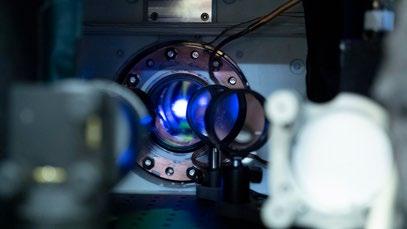
Specializing in calibration and repair of avionics and instrument test equipment.
- ISO/IEC 17025 Accredited Laboratory -
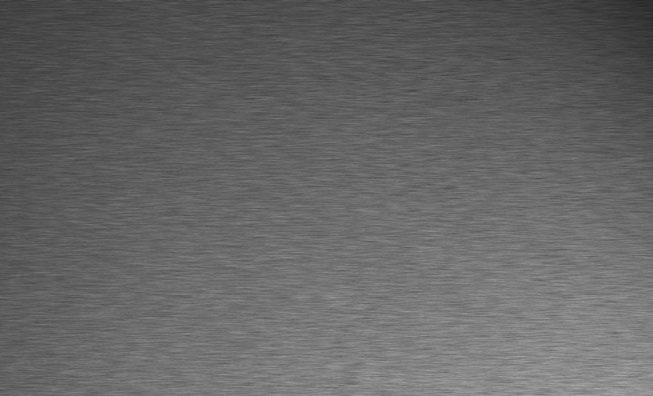
Aeroflex IFR 6000/4000
Transponder/TCAS/ DMENav/Comm Barfield DPS450
PitotStatic/RVSM
• Avionic Test Sets • Air Data/Pitot Static • Fuel Quantity • Nav/Comm • TCAS • Transponder/DME • RF Microwave • Pressure and Vacuum • Tensiometer • Crimpers • Dimensional Tooling
Manufacturers We Service
• Aeroflex (IFR, BF Goodrich, JC Air, King) • Barfield • Collins • Demo Systems/Teledyne • DMC • Fluke • GE/Druck • Honeywell/Sperry • HP/Agilent • King Radio • Simmonds • Snap-On • Tel-Instruments (TIC) • Welnavigate
Aeroflex Authorized Service Center for Legacy Products
Express Calibration Services
1803 SW Market Street • Lee’s Summit, MO 64082 Phone: (816) 246-9292 • Fax: (816) 246-9295 • Email: custsvc@expresscal.com Review our capability list at expresscal.com.
Project LiBforSecUse: Quality Assessment of Electric Vehicle Lithium Ion Batteries for Second Use Applications
Stanislav Mašláň
Czech Metrology Institute (ČMI) Gareth Hinds
National Physical Laboratory, UK (NPL) Mohamed Ouameur
Laboratoire National de Métrologie et d’essais, France (LNE) Frédéric Overney
Swiss Federal Institute of Metrology (METAS)
This paper introduces the European project LiBforSecUse, which is focused on metrology requirements for impedance spectroscopy of commercial Li-ion cells for second life applications. It focuses specifically on the achievements in the workpackage dealing with traceability of low impedance analyzers for cell impedance spectroscopy. Several low impedance mΩ-range impedance standards are described. Next, a reference digital sampling impedance bridge for mΩ-range and frequencies from 0.01 Hz to 5 kHz is presented. Finally, preliminary results of an international, interlaboratory comparison of low impedance measurements are presented.
1. Introduction
Lithium-ion batteries are the energy storage technology of choice in electric vehicles due to their high energy density, cycling stability, high efficiency and continuously decreasing cost. However, one of their drawbacks is that the capacity of each cell in a battery pack tends to decrease steadily with time during operation due to degradation of the electrode materials. Most vehicle manufacturers specify a limit on this ‘capacity fade’ of 70-80 % of the original capacity, after which the battery pack must be removed from the vehicle as the driving range is no longer sufficient. There is a growing market for repurposing of such battery packs for ‘second life’ applications such as residential and industrial power storage, where the energy and/or power demands are not as stringent as those in automotive applications.
An important parameter in the characterisation of battery performance and lifetime is state-of-health (SoH), which is usually defined as the ratio of the remaining capacity of the cell to its original capacity. Cells in the same module of a battery pack should exhibit similar SoH, otherwise performance, lifetime and safety can be compromised. In order to qualify battery cells for ‘second life’ applications in a cost-effective manner, it is necessary to evaluate their SoH rapidly, accurately and non-destructively. Electrochemical impedance spectroscopy (EIS) has been proposed as a potential technique for rapid evaluation of SoH but to date its application has been hampered by the lack of an underpinning metrological framework, including traceability, quantified measurement uncertainties and defined measurement procedures.
The LiBforSecUse project set out to address these issues by developing validated impedance-based measurement procedures aimed at reducing the measurement uncertainty in SoH from 10 % to 3 %. This paper summarizes a key component of the project, which was the establishment of traceable impedance measurements in the mΩ and sub-mΩ range to underpin the calibration of EIS spectrometers. Reference impedance standards, calibration setups and the results of an interlaboratory comparison are presented and discussed.
Figure 1. Two terminal (left), four terminal connection (center), effect of mutual coupling (right).
Figure 2. a) 4TP standard measured in 4T configuration, b) 4TP standard measured in 4TP configuration.
2. Impedance Traceability
It is well known that measurements of EIS spectra by different laboratories are not always comparable. Often, even measurements performed within a single institution may be incomparable among several test setups with e.g. different wirings. Therefore, the first and fundamental work package of the project LiBforSecUse was focused on ensuring traceability of low impedance measurements specifically for EIS. This process had several steps: i) Preparation of a good practice guide for low impedance measurements. ii) Development and construction of reference impedance standards simulating lithium cell impedance (so called “dummy cells”). iii) Development of a reference low impedance calibration setup. iv) Calibration of reference standards. v) Calibration of EIS meters by the reference standards. vi) Interlaboratory comparison verifying steps (i) to (v). 2.1 Good Practice Guides
Two good practice guides were produced in the scope of the work package. The first guide was focused on precision low impedance measurements using the reference low impedance calibration setup [2] described below. The second guide was focused on good practice in measurement of cells using EIS spectrometers [3]. Both guides, among other things, discuss good practice in wiring a range of cells and standards to various EIS and RLC meters and the interferences and errors that can be expected. Key problems are summarized in the following paragraphs.
Two types of EIS/RLC meters are available for measurement of cell impedance spectra. The first type is measurement in simple 4-wire/terminal (4T) configuration as we know it from DC resistance metrology. The second group of meters, usually general RLC meters, uses so called 4 terminal-pair (4TP) coaxial cable connection to the unit under test (UUT). There is a fundamental difference between the two. 4T connection is simple, however it is not possible to fully eliminate effective mutual inductance M between potential and current leads. This always leads to a certain reactance (Xs) measurement error. With typical test leads used in EIS, it is reasonable to expect up to ±50 nH mutual inductance uncertainty. This is roughly ΔXs = ±1.5 mΩ at 5 kHz. It is possible to reduce the error by twisting the leads, placing current and potential bundles perpendicular to each other and keeping distance between them (see guides for details). The SHORT correction that is used to eliminate residual series impedance, including this parasitic coupling as it is known from impedance metrology, is not always applicable for EIS meters. The idea of SHORT correction
a) b)
Figure 3. Principle of SHORT correction.
is to connect the leads in as close as possible to ideal zeroohm arrangement, measure the residual series impedance Zs as shown in Figure 3 and then subtract this residual Zs value from all subsequent measurements on the UUT. The problem is that most EIS meters do not have the SHORT correction function, so this can only be done manually in postprocessing of the data. Furthermore, rearranging the test leads from UUT measurement to SHORT connection changes their geometry and thus the residual coupling M, so the error reduction is limited.
Therefore, the 4TP connection was introduced in precision impedance metrology. This adds coaxial shielding to the test leads and ideally even to the impedance standards to be measured. The idea is that the measuring RLC bridge is forcing return current through the coaxial shields of current coaxes which is equal to the forward current via live conductors. Therefore, magnetic radiation from the current coaxes should cancel out and thus parasitic voltage induced in the potential leads or coaxes is minimized. It is useful to note that in 4TP configuration, the impedance is calculated from voltage drops on potential coaxial ports UPH and UPL as shown in Figure 2b, instead of only from the potential difference UX between the live conductors as shown in Figure 2a. This means the UUT shield impedance ZG becomes part of the measured impedance; however, this effect can be neglected by changing the standard construction [2]. Nevertheless, the 4TP connection facilitates getting close to the UUT without much interference and then the four coaxes can be converted to the desired 4T or 2T connection. Residual series impedance in the adapter can be suppressed by SHORT correction in the same way as for 4T measurement.
The problem related to any practical EIS/RLC measurement is that we cannot choose the meter terminal configuration or UUT terminal configuration. The measurement must be performed with what is available. Thus, the good practice guides describe several practical examples of interconnection between 4T/4TP bridges and different standards or cells and suggest some measures to reduce errors. 2.2 Reference Impedance Standards - Dummy Cells
Calibration of EIS meters or RLC meters for EIS requires reference impedance standards. These calibration impedance standards mimicking the impedance of lithiumion cells, sometimes called “dummy cells,” are specific in value, operating range and also terminal arrangement. Typical cell impedance may vary from values below 1 mΩ for large, high current cells up to tens of milliohms or even above 100 mΩ for small, discharged, aged cells. Although there are many impedance standards usable in this range, there are a few challenges specific to EIS. First, real cells exhibit not only “pure” resistance or reactance (capacitors or inductors) but also strongly frequency-dependent impedance with arbitrary phase angles. In addition to simulating the correct impedance value, it is also beneficial to have a terminal arrangement similar to the particular cell geometry. This is especially helpful for low impedance measurements as even small mutual inductances between the test leads and/or the cell itself will translate into relatively high parasitic reactance. Furthermore, Li-ion cells always have some DC bias voltage around 4 V, so when calibrating EIS meters it is wise to check its impedance measurement accuracy dependence on applied DC bias voltage from the UUT (cell or impedance standard) at least at a few impedance values. To our knowledge there are no commercially available “dummy cells” having DC bias simulation and there is definitely no established impedance metrology in the presence of DC bias voltage. Thus, one of the goals of the project was to develop at least one standard with controllable DC bias.
Several approaches were tested in the scope of the project: i) Passive resistive standards based on coaxial current shunts. ii) Passive reactance standard with variable DC bias. iii) Active impedance simulators based on impedance multipliers. iv) Active digital sampling impedance simulator.
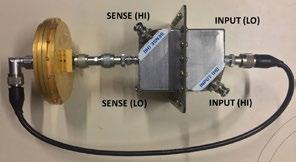
Figure 4. Calculable disk coaxial shunt with adapter to 4TP developed by LNE (left). Cage type current shunt of CMI production (right).
2.2.1 Passive Resistive Standards
The first group of standards that were developed and tested were standards based on coaxial current shunt designs common in AC current or AC power metrology. There are numerous designs possible, however there are two main groups: a) calculable, and b) secondary. The calculable standards are typically based on metal films (or wires) in a geometrical arrangement for which it is possible to calculate the frequency dependence of complex impedance either numerically or analytically. One example that was developed and tested in the scope of this project is a disk shunt developed by LNE shown in Figure 4 [12]. The passive resistive standard is based on a completely calculable structure defined in a 2TP configuration using a resistive disk made of a resistive alloy positioned at the end of a coaxial line. The resistive disk that defines the resistance value has been fabricated using the vacuum deposition technique and its optimization allows obtaining an ac-dc variation of a few μΩ/Ω and a few μrad on the phase up to 1 MHz. The complete structure of the standard is defined in a 4TP configuration with BNC connectors using an adapter box to 4TP based on the approach described in [14].
Secondary standards are general artifacts of various constructions usually designed to have as flat as possible frequency dependence and minimal response to current loading (temperature). Mostly, they are based on a cage design that is being reiterated by commercial manufacturers and NMIs in many different forms. Typically, these standards can be manufactured with impedances down to few milliohms and they are assembled using as many as over a hundred precision resistors, which makes them quite expensive. Nevertheless, they can be calibrated using the ac-dc difference technique and partially modelled, so they can provide outstanding uncertainty in the order of ppm and microradians in angle in a frequency range from DC to at least tens of kilohertz. However, all these standards were developed for other purposes, so they are equipped with two coaxial ports on the opposite sides of the standard. This is the optimal solution, reducing mutual coupling between current input and potential output, but it makes them hard to connect to 4TP bridges or even 4T EIS meters if the terminals are far apart. Therefore, these can be complemented by an adapter box to classical 4TP connection based on [14].
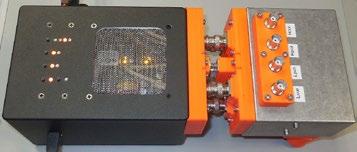
Figure 5. Capacitance simulator based on mutual inductor with “ideal” controllable DC bias source developed by CMI.
Another idea developed and tested in the scope of this project was a reactance standard based on mutual inductance equipped with a variable DC bias source. It is not a simple task to realize metrologically usable selfinductance below a few microhenries as the coil would be too small and a considerable portion of the reactance would be actually caused by coupling to terminals and external leads. However, this can be easily achieved by mutual inductors. This is a pair of coils where one is used for current input and the other is used for sensing potential. It is quite simple to realize inductances down to the nanohenry range using this approach. Another advantage is that the mutual inductor has very small phase angle errors compared to self-inductance, where wire resistance would dominate the impedance at low frequencies. The standard developed in this project used a simple trick— inversion of polarity of the secondary coil, which inverts the apparent reactance and thus the standard appears as a large capacitance to the EIS/RLC meter.
Furthermore, the standard was accompanied by a variable floating DC bias source that was designed not to affect the standard’s impedance. This was achieved by inserting two isolated, but tandem-controlled, DC sources in the current and potential circuit. The current path DC bias source has to handle full peak measurement current of up to ±2.5 A at up to 5 V bias, however its finite internal impedance does not affect the apparent impedance of the standard, because it is not in the potential sensing circuit. There is an independent precision DC bias source inserted in the potential circuit. Since there is almost no current flowing via the potential DC bias source, its internal impedance should not introduce additional voltage drop and thus does not affect the simulated impedance. The whole circuit appears, from the EIS meter side, as an impedance with a variable series source of DC bias with zero internal impedance. This makes the standard optimal for testing EIS meter error dependence on applied DC bias. Details of the standard were published in [10] and the prototype design was open sourced [9]. 2.2.3 Active Impedance Simulator Based on Impedance Multipliers
Another approach to simulating low impedances is the use of active simulators based on operational amplifiers. Two topologies were tested. One topology developed at PTB used a low resistance standard as a reference and an active modifying circuit simulating typical cell impedance. The whole solution was encapsulated in a box mimicking a large lithium-ion cell with two screw terminals. This is the ideal solution as it is possible to directly check EIS meter accuracy without changing the geometry of the test leads and thus parasitic reactances. The standard also contained an internal switch, enabling simulation of several different impedance characteristics as well as short circuit for eliminating the EIS meter leads coupling problem.
Another approach developed at RISE was based on active impedance multipliers with power operational amplifiers. This technique allowed multiplication of precision and stable capacitance of 1 μF to roughly 1 F in two steps. The principle of operation and a prototype are shown in Figure 6. 2.2.4 Active Digital Sampling Impedance Simulator
The last approach developed and tested in the scope of this project was an active digital sampling simulator developed at METAS called iSimulator. The simulator is an extension of a previous version that was developed for higher impedances [13]. A simplified diagram of the new simulator is shown in Figure 7. The idea is that the RLC meter (UUT) supplies current ILC to a calculable reference impedance ZCB. The voltage drop at ZCB is digitized by the PXI setup’s digitizer channel Vi. Software (SW) controlling
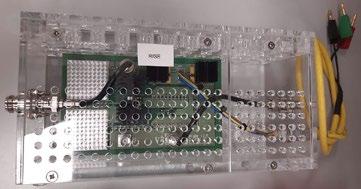
Figure 6. Low impedance simulator based on impedance multipliers developed at RISE.
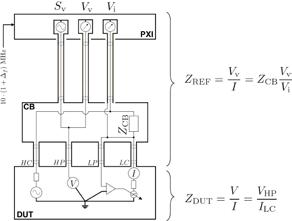
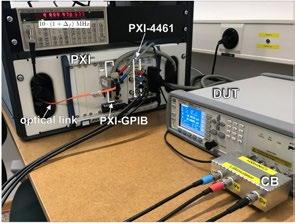
Figure 7. Principle of operation and example of iSimulator setup developed at METAS with calibrating impedance bridge Keysight E4980A.
the PXI setup phase locks to the Vi signal (UUT driver signal) and sets the arbitrary generator’s Sv voltage and phase angle so the UUT meter measures a voltage VHP proportional to the desired simulated impedance ZREF. In this way it is possible to simulate any impedance value anywhere in the full complex plane. This allows to check UUT accuracy in detail and not only at a few discrete points mostly concentrated either around the real axis (resistor) or the imaginary axis (capacitors and inductors). However, the disadvantage of the system is its limited usability with some RLC/EIS meters. The SW feedback loop requires a certain time to settle, so EIS/RLC meters that do not provide a continuous stable drive signal, e.g. due to ranging checks, may not be usable with this setup. This was practically tested on a Keysight E4980A. 2.3 Reference Impedance Calibration Setup
The developed standards had to be properly characterized. NMIs are often equipped with digital sampling impedance bridges designed even for low impedances, however EIS calls for extremely low frequencies down to at least 0.01 Hz. Typical impedance bridges incorporate transformers which are obviously not capable of operating at such low frequencies. Therefore, a specialized digital sampling impedance bridge had to be developed. Requirements were the following: i) Frequency range at least 0.01 Hz to 5 kHz. ii) AC rms current up to at least 1 A. iii) Measurement in the presence of DC bias voltage up to at least 5 V. iv) Measurement range down to at least 1 mΩ with target uncertainty below 1% at 1 mΩ. v) Based on commonly available instruments. vi) Measurement of impedance in 4 terminal or 4 terminal-pair (4TP) topologies.
It was decided to make it as simple as possible and base it on commonly available components so the whole setup could be replicated at other NMIs. The main challenge of the design was measurement of very small ac voltage drops at the UUT in the presence of a large DC bias voltage. It was not possible to simply use AC coupling at frequencies below 1 Hz, so it was decided to test the performance of various digitizers when digitizing directly DC+AC voltage. Several digitizers were considered. The first choice were sampling multimeters Agilent 3458A [5]. They offer great performance at very low frequencies due to their stability, however the performance in the presence of DC bias is not optimal due to limited resolution [11]. Surprisingly, the low-end digitizers NI 9238/9239 [6] for the compact-DAQ platform turned out to have acceptable performance in the desired frequency range up to 5 kHz even with DC bias [11]. However, in order to maximize performance, the setup was in the end accompanied by DC bias eliminators in order to remove DC bias from the digitized waveforms, which greatly improved digitizer resolution and thus bridge performance even at very low impedances below 1 mΩ. Furthermore, active guard drivers for the digitizers were used to eliminate ground leakage currents. Examples of the two setups are shown in Figure 8.
However, the 4TP topology shown on the right in Figure 8 had one major drawback. Its performance was limited by common mode voltage on both digitizers DMM 2 and DMM 3, so even small differences in linearity resulted in high measurement errors. So, another unusual modification described in [11] was tested. The digitizers were rearranged so the UUT voltage was measured basically by two 4T bridges. One measures voltage drop at live terminals of the UUT (Z2) and the other measures the ground terminal difference of the UUT. Both are summed together to satisfy the 4TP impedance definition. Thus, the technique was named 2x4T. More details can be found in [11] or [2].
The measurement uncertainty of the setup was analyzed.
Figure 8. 4-terminal and 4 terminal-pair topology of impedance digital sampling impedance bridge.
A complete Spice model of the setup, including parasitic mutual couplings between bridge components, was made and Monte Carlo calculation performed. The resulting uncertainty in impedance at 1 mΩ was as follows: vii) Rs and Xs expanded uncertainty below 0.005 % of modulus |Z| up to 400 Hz. viii) Rs and Xs expanded uncertainty below 0.05 % of modulus |Z| up to 5 kHz.
These uncertainties fully satisfy the project’s requirement of 1 % uncertainty. The measurement capability was verified by a series of measurements on known impedance standards. Some of the measurements were presented in [11]. 2.3.1 Open Z Bridge SW Tool
The designed bridge core is an open source SW tool TWM [7] that was developed in the scope of the previous EMPIR project TracePQM [4]. The TWM tool is used to control digitizers and calculate various parameters from the digitized voltage and current waveforms. So, for this project, it was simply extended by new digitizer drivers for NI9238 modules and by a new algorithm TWM-LowZ that simplifies measurement of impedance (or complex voltage ratio). The TWM tool itself is capable of measurement at single frequency and current. However, for effective and comfortable use, it is ideal to have the capability to automatically control signal source (frequency and current) and to automatically sequence measurement of whole frequency or current characteristics as with regular EIS meters. Thus, another SW tool named “Open Z bridge” was developed [8]. This tool uses the TWM Server API to control it, so the whole bridge SW consists of two interconnected applications.
The Open Z bridge tool has no ambition to solve all problems related to measurement of low impedance, however it is a convenient tool for some measurements. Despite the fact that the bridge was designed mainly for calibration of reference standards at low frequencies, it is of course usable even for direct measurement of cell impedance spectra. Its main features are the following: i) Automatic measurement of frequency sweep, current sweep, DC bias current sweep or combined frequency/current sweep.
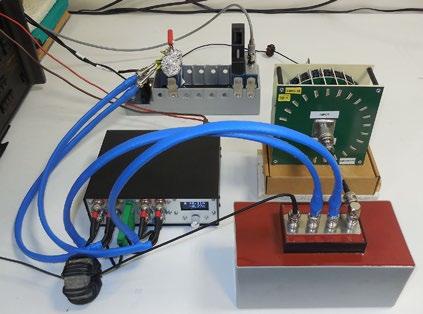
Figure 9. Setup of low impedance digital sampling bridge measuring 4TP capacitor (UUT).
ii) Digitizing and signal processing via the TWM tool using algorithms TWM-LowZ (low impedance) or TWM-InpZ (high impedance). iii) Supports several signal sources (NI9260, Tektronix 3100, Agilent 33120A, Fluke 5000 series calibrators). iv) Measurement of impedance or complex voltage ratio. v) Exporting simple reports to XLS file. vi) Usable for measurement and direct generation of several correction files for the TWM tool. vii) Full documentation and good practice guide available. viii) Open source project in LabVIEW 2020. 2.4 Interlaboratory Comparison
Several small interlaboratory comparisons were held in the scope of the LiBforSecUse project. The first comparison was focused on characterization of the developed impedance standards. CMI and RISE participated. The comparison showed acceptable agreement, typically from 100 nΩ to 2 μΩ, on both resistance and reactance. An example is shown in Figure 11. However, it also demonstrated the importance of proper and clearly defined interconnections between the bridge and the UUT. There was good agreement on all 4T and coaxial standards. However, poor agreement was observed for the 4TP standards most likely because of different terminal wiring configuration of the participants.
Another comparison was focused on calibration of EIS meters. Two resistance standards of impedances 1 mΩ and 10 mΩ were used to calibrate the EIS meters. Then, a 3 mΩ resistor and a dummy cell standard with impedance around 1.5 mΩ to 4.5 mΩ were measured and the results compared. Preliminary results showed two major problems. First, the EIS instruments mostly exhibited errors lower than the standard deviation of the repeated measurements (noise). Second, the lack of manual ranging function of the EIS meters made error correction using measurement of known standards 1 mΩ and 10 mΩ questionable because EIS meter error evaluation and UUT measurement might be performed on different physical ranges, meaning that the error correction attempt might actually increase the errors. Preliminary results showed no error improvement using range error corrections as expected. On the other hand, the SHORT correction of residual series impedance, mainly caused by the mutual inductance phenomenon, reduced the errors of comparison participants by an order of magnitude or more. The spread of reactance due to different wiring of standards would be up to ±1 mΩ without correction, versus less than ±40 μΩ at 5 kHz with SHORT correction. Therefore, one relevant conclusion of the comparison is the need for SHORT correction to be performed. Another relevant outcome was finding that all used EIS meters (Biologic VMP3, Zahner Zenium and Gamry Ref 3000) exhibited errors deep within their specifications.
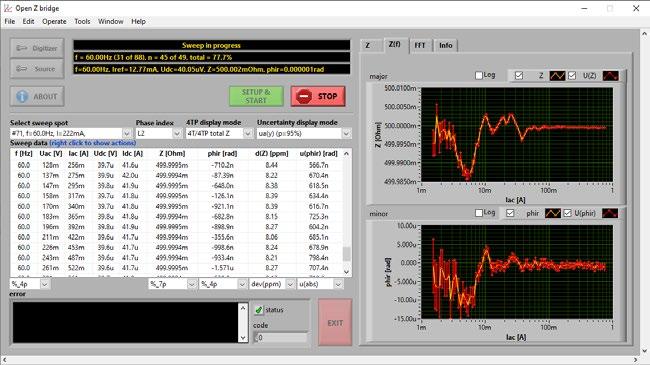
Figure 10. Open Z bridge main panel.
Figure 11. Comparison of simulated impedance of < 1.5 mΩ between CMI and RISE. The blue lines are expanded (k = 2) uncertainty limits of the CMI measurements, the green points are absolute deviations of the RISE-CMI measurements.
Finally, a third comparison with actual lithium-ion cells was performed. Impedance spectra at various states of charge were measured by several labs. The purpose of this comparison was to check if the measurement procedures lead to compatible measurements among the laboratories. The data are however still being processed, so no results or conclusions are available at the time of writing this article. The data will be available after the end of the project.
3. Conclusion
Partners of the EMPIR project LiBforSecUse successfully developed metrology of mΩ-range impedance in the full complex plane in support of electrochemical impedance spectroscopy of lithium cells. Good practice guides explaining problems related to low impedance measurement were prepared. A set of impedance standards of mΩrange values covering pure resistances, reactances and impedances with arbitrary phase angles were developed. All the standards were characterized using a newly developed digital sampling impedance bridge. Detailed descriptions of the standards and the bridge were published (see references). Three interlaboratory comparisons were held in order to confirm newly developed capabilities. The comparisons showed agreement of impedance measurements among the participants mostly below 1 % which was the target uncertainty of this project. SHORT correction was identified to be able to reduce EIS measurement errors by more than an order of magnitude. Preliminary results have been summarized in this article and a detailed report will be available after the end of the project.
References
[1] EMPIR Project LiBforSecUse. https://www.ptb.de/ empir2018/libforsecuse/project/overview/ [2] Mašláň, S. et al. “Guide to Low Impedance Measurements using Digital Sampling Setup.” https://zenodo.org/record/5960848 [3] Seitz, S. et al. “Best practice guide on the measurement of the impedances of Li-ion battery cells and the conduction of correlated life cycle tests.” https:// zenodo.org/communities/libforsecuse/ [4] EMPIR project TracePQM: Traceable Power Quality Measurements. http://tracepqm.cmi.cz/ [5] Keysight. “3458A Digital Multimeter, 8.5 Digit.”https://www.keysight.com/zz/en/ product/3458A/digital-multimeter-8-5-digit.html [6] National Instruments. “NI-9238-C Series Voltage Input Module.” https://www.ni.com/pdf/ manuals/376138a_02.pdf [7] Mašláň, S. et al., “TWM Traceable PQ Wattmeter.” https://github.com/smaslan/TWM [8] Mašláň, S. “Open Z bridge.” https://github.com/ smaslan/open-z-bridge [9] Mašláň, S. “Capacitive Reactance Simulator Based on Mutual Inductor.” https://github.com/smaslan/Zsim-mutual [10] Mašláň, S. 2020. “High capacitance simulation using mutual inductors,” Paper presented at IMEKO TC4, Palermo, Italy, September 14-16, 2020. https:// www.imeko.org/publications/tc4-2020/IMEKOTC4-2020-32.pdf [11] Mašláň, S. 2020. “Design of digital sampling impedance bridge for battery impedance spectroscopy,” Paper presented at IMEKO TC4, Palermo, Italy, September 14-16, 2020. https:// www.imeko.org/publications/tc4-2020/IMEKOTC4-2020-32.pdf [12] Ouameur, M., F. Ziadé and Y. L. Bihan. 2019. “Toward a Calculable Standard Shunt for Current
Measurements at 10 A and Up To 1 MHz.” IEEE
Transactions on Instrumentation and Measurement 68, no. 6: 2215-2222. doi: 10.1109/TIM.2018.2884553 [13] Overney, F. and B. Jeanneret. 2017. “Calibration of an LCR-Meter at Arbitrary Phase Angles Using a Fully Automated Impedance Simulator.” IEEE
Transactions on Instrumentation and Measurement 66, no. 6: 1516-1523. doi: 10.1109/TIM.2017.2652500 [14] Kibble, B. P. 2019. “Four terminal-pair to anything else!” IEEE Colloquium on Interconnections from DC to
Microwaves (Ref. No. 1999/019): 6/1-6/6. doi: 10.1049/ ic:19990102.
Acknowledgement
This work was carried out under the scope of the LiBforSecUse (17IND10) project. The project received funding from the EMPIR programme co-financed by the Participating States and from the European Union’s Horizon 2020 research and innovation program. Stanislav Mašláň (smaslan@cmi.cz, Czech Metrology Institute, Okružní 31, 638 00 Brno, Czech Republic) studied at the Technical University of Brno and specialized in Automation and Measurement Techniques from 20052011. He received his Ph.D. in the field of low impedance measurements in 2021. He has been working at the Czech Metrology Institute since 2011. Now he is involved in low frequency impedance measurements and digital sampling techniques development. He is also involved in development of metrological hardware, the data processing and analysis algorithms, uncertainty analysis of algorithms and in development of various software for measurement automation.
CAL LAB: The International Journal of Metrology CALL FOR PAPERS
Knowledge should be shared! We need experienced technicians, engineers, scientists, industry consultants & educators to contribute their knowledge to a wider audience.
For more information: https://www.callabmag.com/submissions/ or email office@callabmag.com
The Fine Print: Finished abstracts or articles can be sent to office@callabmag.com. We regret we cannot print all articles submitted. Article acceptance is based on relevance to the field of metrology and calibration in any disipline and is subject to space available. Neither CAL LAB Magazine nor Cal Lab Solutions, Inc. claim copyrights to published material. Authors retain sole ownership over their own work.
Metrological Challenges of Plastics Recycling
Martti Heinonen
VTT MIKES (Finland)
Europe aims at climate neutrality by 2050; to achieve this, plastic recycling needs to be increased through better processes and technologies. There is an increasing need for measurement technology that enable efficient identification of different plastic types mixed with other waste. Due to variety of materials in waste, measurements are challenging and quality control is difficult. On the other hand, material volumes are large and increasing, which calls for efficient on-line measurement and quality control methods. In this work, current sensor technologies used in plastics recycling were reviewed and needs for new measurement and calibration technologies were analyzed. Our review shows that among various sensing technologies developed for plastics recycling, NIR/VIS are most widely applied in commercial sorting systems. Hyperspectral and multisensing technologies with AI-based data analysis were concluded to have largest future potential. Significance of proven quality increases with expanding business and with technology development. Efficient and feasible calibration methods including certified reference material supplies should be developed.
Introduction
The annual global production of plastics increased from 348 to 359 million tons in 2017 to 2018. Totally 62 million tons was produced in Europe in 2018. At the same year, 9.4 million tons of plastic post-consumer waste was collected for recycling [1]. The recycling rate globally is estimated to be 14 – 18 % [2]. However, we need to increase this because recycling of plastics has an important role in achieving the goals of EU Green Deal that aims making Europe climate neutral in 2050 [3]. Today, plastics is mostly recycled into secondary raw material by applying a mechanical recycling process. This means that collected plastics waste is shredded/grinded, sorted, washed, dried and extruded [4-8]. The basic structure of the secondary raw material remains the same as in the collected waste. Due to inhomogeneity, produced secondary raw material can only be used in limited number of applications. Significant advancement is expected from chemical recycling in which waste is converted into fuels or petrochemical feedstock. Pilot plants applying chemical recycling are running in several countries and developments for scaling up are on-going [9-13]. Measurements play an important role in running plastics recycling: many sensor technologies are applied in sorting materials and controlling processes. Due to variety of materials in waste, measurements are challenging and quality control is difficult. On the other hand, material volumes are large and increasing, which calls for efficient on-line measurement and quality control methods. Research is needed for developing new measurement technologies and appropriate metrology tools for quality control that enable efficient process operation and ensure reliability of data for fair trade. This paper reviews the current sensor technologies used in plastics recycling and studies needs for new measurement and calibration technologies.
Plastics to be Monitored
Plastics are composed of organic polymers that are formed by very large molecules. These macromolecules are multiples of simpler chemical units called monomers [14,15]. Majority of needed plastics belong to the category of thermoplastics including polyethylene terephthalate (PET), high density polyethylene (HDPE), low density polyethylene (LDPE), polyvinyl chloride (PVC), polypropylene (PP), polystyrene (PS) and acrylonitrile butadiene styrene (ABS). The chemical composition of a thermoplastic material does not change when heated. Plastic materials may also contain plasticizers, fillers and additives for improving different properties [16].
Sensor Technologies for Detecting Plastics
Automatic separation and sorting are important for efficient plastic recycling because different types of plastics need to be separated from mixed waste and from each other. Photonic sensor technologies are used for characterizing materials in sorting units [6,17]. These technologies are based on detecting the interaction between electromagnetic radiation and molecules/atoms in the material flow. Due to material specificity, the interaction provides spectroscopic fingerprints for different types of plastics. In practice, however, an unknown mixture of different kinds of
materials is very challenging target due to overlapping spectroscopic signals and ambiguity of spectral data. Furthermore, black plastic is a specific problem because it cannot be reliably measured at near infrared wavelength region [18,19]. Development of machine learning and AI algorithms for spectral and visual data analysis has been significantly advancing plastics identification and enabling further advancements through combining different sensor technologies.
Spectroscopy techniques applying near infrared (NIR) and visible (VIS) wavelengths as well as x-rays are applied in commercial sorting units [6,20,21]. Other technologies demonstrated in industrial plastic recycling applications include mid-infrared (MIR) and Raman spectroscopy [21,22]. Terahertz detection is being developed for plastic recycling applications [17,24-26]. Laser-induced breakdown spectroscopy (LIBS) has especially been developed for waste electrical and electronic equipment (WEEE) recycling applications [27-30]. Similar to Fourier transform infrared (FTIR) spectroscopy, it is mainly laboratory techniques at the moment [17,22]. Recently, hyperspectral detection in near and mid infrared regions has increasingly been developed for plastics sorting applications.
Table 1 summarizes relevant sensor technologies and a few features of them in plastic detection applications. NIR and hyperspectral imaging are discussed further below. An assessment of commercially available automated sorting technologies was reported by 4R Sustainability, Inc. in 2011 [31]. To get an updated view on currently commercially available technologies, commercial offerings of various recycling system manufacturers were explored in the work reported here. The study was limited to sensor-based plastic sorting systems. As a result, Table 2 lists examples of sorting systems for different applications with information about applied measurement technologies and claimed performances. It should be noted that given sorting efficiency figures are for the whole sorting units and represent the best achievable value as manufacturers have published information. The actual efficiency depends on the input waste mixture and plastic types to be identified. Near Infrared (NIR) Technology
NIR wavelength region covers from about 750 nm to 2500 nm. Chemical bonds N-H, O-H and C-H absorb strongly radiation of this wavelength region, which enables identification of organic compounds [17,33,34]. With appropriate spectral data analysis, plastic types can be detected and quantified. In in-line plastic sorting applications, material on a conveyer belt is illuminated by a NIR light source and absorption spectrum of reflected light is measured with a NIR spectrometer. As both purity (i.e. amount of output target material relative to amount of total output [6]) and throughput are important in sorting facilities, fast measurements are needed. In high-speed conveyor belts identification should be made within milliseconds [35].
Nowadays NIR spectroscopy is the main technique implemented in sensor-based plastic sorting units. Its major disadvantage is unreliable detection of black plastic because
Type Typical spectral range Advantages
NIR 0.9 – 2.5 µm Mature technology, non-destructive, applicable for in-line monitoring
NIR-HSI 0.9 – 1.7 µm
see NIR, spatial distribution data MIR-HSI 2.9 – 4.2 µm spatial distribution data, non-destructive, applicable for in-line monitoring and for inorganic compound detection
VIS 0.4 – 0.7 µm non-destructive,
Raman 3.6 – 50 µm no water or CO2 interference
XRF
LIBS
< 1 nm atomic information, large penetration depth 0.2 – 1 µm atomic information, applicable also for metal identification
FTIR 2.5 – 25 µm non-destructive
THz 100 – 1000 µm high penetration range Disadvantages TRL1
water interference, not for black plastic 9
see NIR
8 water, CO2 and glass interference 7
small penetration depth, not for black plastic 9
sample auto-fluorescence, accurate focusing needed, punctual measurement 6
ionizing radiation, applicable only to PVC 9
accurate focusing needed, destructive, punctual measurement water, CO2 and glass interference, not for black plastic low specificity, water sensitive 4
Table 1. Summary of spectroscopic sensor technologies in plastic recycling applications. 1TRL = Technology readiness level estimated in [6] for each technology in waste sorting units. The TRL scale ranges from 1 to 9 and is described in [32].
Application Technology Claimed features
Recycling plastic bottles and trays NIR, VIS • Sorting system • separates plastic types, colors and shapes, as well as metals and foreign objects • rejection accuracy of up to 99% Manufacturer / Reference
• Sesotec, Germany • https://www.recyclingproductnews.com/ article/34354/latest-sesotec-optical-sortingsystem-provides-high-level-accuracy-atthroughputs-to-eight-tons-per-hour, visited 7.7.2021
Sorting of mixed colour plastic materials VIS (CCD camera) • Sorting system • sorting accuracy 99.99 % • Zhonke, China • https://www.colorsorter-cn.com/sale-8081929plastic-optical-sorter-recycling-machine-with-highsorting-accuracy.html, visited 7.7.2021
Sorting plastic flakes and pellets VIS (CCD camera) • Sorting system • sorting accuracy up to 99.99 % if stream to be sorted has impurity less than 5 % • Hefei Angelon Electronics, China • https://resource-recycling.com/plastics/2016/11/29/ equipment-spotlight-accurately-sorting-plastics-bycolor/, visited 7.7.2021
Sorting of PE, PP, PET, HDPE, PS, PVC and 3-7 mixed plastics; flakes and bottles
Measurement, analysis, and classification of samples of PE, ABS, PVC, PS, PA, PP, PC, and PET NIR, VIS • Sorting system • minimum flake size: 2 mm • purity above 95 %
HSI-VIS HSI-NIR HSI-MIR • Camera system for sorting • also black plastic identification • Tomra, Norway • https://recycling.tomra.com/blog/sortingtechnology-to-cope-with-the-increase-of-thenations-waste, visited 7.7.2021 • https://vdrs.com/tomra-optical-sorting/, visited 7.7.2021
• Specim, Finland • https://www.specim.fi/downloads/
Plastics-sorting-with-Specim-FX-cameras.pdf, visited 7.7.2021
Plastics from mixed waste, sorting by polymer (PP, PE, PVC, PET) and by shape, size and colour
VIS HSI-NIR
Sorting WEEE XRF, VIS, HSI-NIR • Sorting system • Purity up to 98% • zenrobotics, Finland • https://zenrobotics.com/wp-content/ uploads/2019/04/zenrobotics_brochure-1.pdf, visited 7.7.2021
• Sorting system • sorting quality not by contaminations including water • Redwave, Austria • https://redwave.com/, visited 7.7.2021
Plastics sorting: mixed waste, WEEE
laser spectroscopy (absorption, fluorescence, Raman) • Sorting system • rejection rate of over 98% • Unisensor, Germany • https://www.unisensor.de/en/products/productdetails//powersort-200-1.html • https://cdn.uc.assets.prezly.com/0f2e33b7-8ac6449f-92ba-c75e1e1657d1/-/inline/no/, visited 7.7.2021
Table 2. Examples of commercially available sensors-based solutions for plastic recycling.
the reflection intensity is very low due to strong absorption by colorants [6,28,35]. NIR has potential to provide further information about plastic degradation and additives [17, 36]. The penetration depth of NIR is a few millimeters at maximum [17]. Thus, the obtained information originates from the surface only. Due to absorption peaks of water in the NIR wavelengths, water on the sample surface may interfere with a measurement and distort the measurement result. Hyperspectral Imaging (HSI) Technology
In hyperspectral imaging (HSI), spectral data over a wide wavelength region is created for each pixel of a 2D picture. Using appropriate color coding, a visual presentation of chemical compounds on the target surface can be created. Recently, this technology has significantly been advanced by developments in computing capacity and algorithms for analyzing spectral data, including machine learning algorithms [17,35,37-40]. In recycling applications, HSI provides enhanced efficiency in in-line material detection of mixed waste.
Many of HSI systems developed for recycling applications apply a line scale (push broom) operation [6,17,38], i.e. spectral information of pixels in a single line is collected at a time using a line scan camera. When targets move on a conveyer belt, full 2D pictures with pixel specific spectral data are created.
Both near infrared and mid-infrared detection based HSI-systems have been developed for plastic recycling applications [6,17,35,37-40]. The advantage of MIR over NIR is its applicability to black plastic measurements. However, NIR technology is already relatively mature and less expensive than MIR. HSI has also been combined with fluorescence spectroscopy to analyze technical black plastic particles after grinding relevant to WEEE and automotive industry waste [18].
Needs for Measurement Quality in Plastics Recycling
In plastic recycling processes, there is an increasing need for measurements aiding sorting, i.e. for discriminating material between different plastic types and other waste. Because of a limited number of sorting categories for a single sorting stage, there may be several stages in series in a process to achieve the aimed sorting output as shown in a schematic diagram of Figure 1. Further measurements are needed to control the quality of sorted plastic material. From the quality control point of view, these measurements
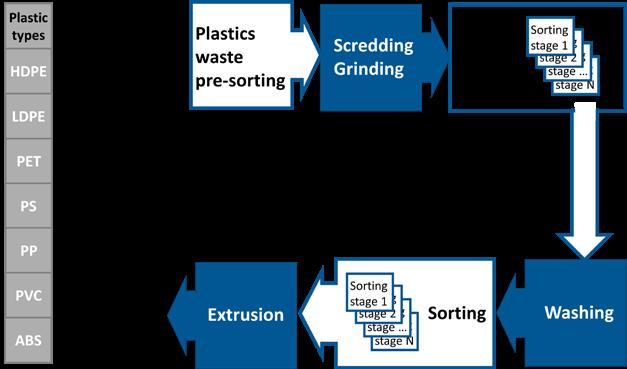
Figure 1. Schematic diagram of a mechanical plastic recycling process and quality control targets. Most relevant types of plastic are listed in the grey column.
are more important because the results affect both process control and the trade value of the produced secondary raw material. Although variations in the chemical matrix and physical properties in the measurement target are much more limited than in the input mixed waste, required measurement reliability is more difficult to achieve due to more strict requirements for contaminants and other measurement parameters. Quality control measurements are naturally also needed to support trade of recycled plastic materials and manufacturing processes using secondary raw materials.
After exploring the theoretical limits of a circular recycling value chain for plastic packages in the Netherlands, T. Brouwer et al. [41] proposed in 2020 classification of recycled plastics with acceptance values for degradation and contamination. As non-polymer contaminants do not melt during processing, the limit for such contamination was set to 50 ppm. The same limit applies for other contaminants in food packaging applications. In non-food applications the contamination criteria were set to levels of 1 – 20 % depending on the contaminant and application. According to the survey of T. Brouwer et al., the polymetric purity of washed milled goods in 2017 ranges from 87 % to 99 % for different plastic waste types [41].
According to [42], the quality standards provided by DerGrünerPunkt in Germany [43] are widely considered as benchmark in industry. Maximum total amount of impurities defined by those standards ranges from 2 % to 30 % by mass. European RecyClass initiative has published criteria for recyclability [44] that specify minimum relevant plastic material content to 95 % and maximum amount of residues to 5 % for best quality. Both DerGrünerPunkt and RecyClass provide also further criteria to several characteristic parameters. Various other standards were reported by A. Grant et al. [45] in their survey of quality standards applied to sorted fractions of plastics. The target material content is mostly 94 % to 98 % depending on the material while the lowest target is 80 % according to this survey.
Current European standards for characterization of recycled plastics list various mandatory and optional parameters to be determined [46-52]. These standards are applied in carrying out reference measurements to support plastic recycling but they do not state criteria nor estimation for the measurement reliability. According to these standards, material content and contamination should be determined using manual laboratory methods described in these standards or other specified standards. From the technologies described in the previous chapter, only FTIR and NIR are addressed in these standards.
T. Brouwer et al. call for improved efficiency in automatic sorting [41] to respond to the increasing worldwide need for increasing significantly plastic recycling. Along with this, efficient automated reference measurement methods are needed to be developed and standardized.
Metrological traceability is defined as “property of a measurement result whereby the result can be related to a reference through a documented unbroken chain of calibrations, each contributing to the measurement uncertainty” [53]. It is the key feature of measurement data with known level of reliability. The reliability is characterized by measurement uncertainty that comprises errors and non-idealities in the measurement instrument, setup, method, conditions etc. and the uncertainty arising from the reference used in the calibration of the instrument. To obtain robust metrological traceability in the plastic recycling domain, we need to have: • measurement methods and instruments providing demonstrated measurement uncertainty meeting the quality requirements of the intended application, and • calibration methods that provide metrological traceability with sufficient uncertainty.
When considering the measurement technologies currently available for sorting, it is obvious that a lot of development is still needed to achieve required level of reliability, speed and diversity when sorting various plastic waste mixtures. As described above, many different technologies have been developed and are already on market but further development is needed especially to reduce errors due to interference between different chemical compounds and to enable fast in-line detection. Hyperspectral imaging at different wavelength region seems to have a great future potential. Also, combining several sensor techniques seems to be a promising approach. Both of these are boosted by the development of artificial intelligence based data analysis techniques.
To provide efficient and feasible calibration scheme for inline measurements, automatic sampling systems are needed. Errors due to sampling and sample handling need to be minimized to keep overall measurement uncertainty at an acceptable level. Alternatively, certified reference material sets could be developed to be used for calibrating instruments monitoring the sorting output. With accredited supplier and appropriate sample handling, sufficient accuracy can be achieved in applications where contamination level is low and the number of materials of interest is very limited.
When the calibration expands with expanding plastic recycling business, also the reference measurements need to be more efficient. To enable analysis of increasing amount of reference samples, automatic analysis and sample handling methods with efficient data analysis will be needed.
Summary
Various sensor technologies have been developed for plastic recycling process applications. Many of them, however, are still in the development phase. NIR/VIS are most widely applied in commercial sorting systems. Usually, a single technology can only detect a few plastic types in a reliable way. The major challenges for the measurements are set by the needed measurement speed, spectroscopic interferences between different chemical compounds and overall reliability and uncertainty estimation. Hyperspectral and multi-sensing technologies with AI-based data analysis are considered to have largest future potential.
Significance of proven quality increases with expanding business and with technology development. To support reliable measurements, fast and feasible calibration methods are needed for both in-line and laboratory measurements. It is also evident that we will need certified reference materials and improved validated sampling techniques.
References
[1] Plastics Europe. 2019. Plastics – the Facts 2019: An analysis of European plastics production, demand and waste data. https://plasticseurope.org/wp-content/ uploads/2021/10/2019-Plastics-the-facts.pdf [2] OECD Environment Directorate. 2018. Improving
Plastics Management: Trends, policy responses, and the role of international co-operation and trade. OECD Environment Policy Paper no. 12. https://www.oecd. org/environment/waste/policy-highlights-improvingplastics-management.pdf [3] Hesselink, Tom and Emil van Duuren. 2021. The green deal: A game changer for the waste management and plastics industries. KPMG Advisory N.V. https://assets.kpmg/ content/dam/kpmg/nl/pdf/2021/sectoren/green-dealplastic-recycling.pdf [4] Ragaert, Kim, Laurens Delva, and Kevin Van Geem. "Mechanical and chemical recycling of solid plastic waste," Waste Management 69 (2017) 24–58, https://doi. org/10.1016/j.wasman.2017.07.044 [5] British Plastics Federation. "How is Plastic Recycled? A Step by Step Guide to Recycling." Accessed March 10, 2022. https://www.bpf.co.uk/plastipedia/ sustainability/how-is-plastic-recycled-a-step-by-stepguide-to-recycling.aspx [6] Sormunen, Tuomas and Sari Järvinen. 2021. Report on the state-of-the-art and novel solutions in sorting of post-consumer plastic packaging waste, VTT Technical Research Centre of Finland. VTT Research Report No. VTT-R-00582-21. https://cris.vtt.fi/en/publications/ report-on-the-state-of-the-art-and-novel-solutions-insorting-of[7] Fischer, Joerg, Kieran Evans, and Gerlinde Wita. "Plastics recycling: Insights, challenges, and future trends." Webinar by PerkinElmer. https://www. perkinelmer.com/uk/library/plastics-recyclinginsights-challenges-and-future-trends.html [8] Schyns, Zoe and Michael Shaver. 2021. "Mechanical Recycling of Packaging Plastics: A Review." Macromol.
Rapid Commun. 42, 2000415. https://doi.org/10.1002/ marc.202000415 [9] Bailey, Mary Page. 2021. "Canadian partners exploring new chemical recycling pilot plant for agricultural plastic waste." Chemical Engineering, November 10, 2021, https://www.chemengonline.com/canadianpartners-exploring-new-chemical-recycling-pilotplant-for-agricultural-plastic-waste/?printmode=1. [10] Paladino, Ombretta and Arianna Moranda. 2021. "Human Health Risk Assessment of a pilot-plant for catalytic pyrolysis of mixed waste plastics for fuel production," Journal of Hazardous Materials 405, 5 (March) 124222. https://doi.org/10.1016/j. jhazmat.2020.124222 [11] "New pilot plant for chemical recycling of plastics at Brightlands Chemelot Campus," Agro & Chemistry, News, April 28, 2020. Accessed March 10, 2022. https:// www.agro-chemistry.com/news/new-pilot-plantfor-chemical-recycling-of-plastics-at-brightlandschemelot-campus/ [12] "European project results in chemical recycling pilot plant." Chemical Recycling News, June 14, 2021. Accessed March 17, 2022. https://www. chemicalrecycling.eu/news/european-project-resultsin-chemical-recycling-pilot-plant/ [13] Das, Sreeparna. 2021. "Chemical Recycling Poised to Take Off, Plastics Technology," RECYCLING, January 9, 2021. Accessed March 17, 2022. https://www. ptonline.com/articles/chemical-recycling-ready-totake-off [14] Encyclopaedia Britannica, https://www.britannica.com/ science/polymer. Accessed March 17, 2022. [15] IUPAC Gold Book, 2005–2022. International Union of Pure and Applied Chemistry. Accessed March 17, 2022. https://goldbook.iupac.org/terms [16] Deloitte Sustainability. 2017. Blueprint for plastics packaging waste: Quality sorting & recycling. Accessed
March 17, 2022. Final report, Deloitte Conseil, https://www2.deloitte.com/content/dam/Deloitte/ my/Documents/risk/my-risk-blueprint-plasticspackaging-waste-2017.pdf [17] Cuauhtémoc Araujo-Andrade, Elodie Bugnicourt, Laurent Philippet, Laura Rodriguez-Turienzo, David Nettleton, Luis Hoffmann, Martin Schlummer. 2021. Review on the photonic techniques suitable for automatic monitoring of the composition of multimaterials wastes in view of their posterior recycling."
Waste Management & Research 39, no. 5: 631–651. DOI: 10.1177/0734242X21997908 [18] Gruber, Florian, Wulf Grählert, Philipp Wollmann, and Stefan Kaskel. 2019. "Classification of Black Plastics Waste Using Fluorescence Imaging and Machine Learning" Recycling 4, no. 4: 40. https://doi. org/10.3390/recycling4040040 [19] Becker, Wolfgang, Kerstin Sachsenheimer and Melanie Klemenz. 2017. "Detection of Black Plastics in the Middle Infrared Spectrum (MIR) Using Photon Up-Conversion Technique for Polymer Recycling Purposes." Polymers 9: 435. DOI: 10.3390/polym9090435 [20] Brunner, S., P. Fomin and Ch. Kargel. 2015. "Automated sorting of polymer flakes: Fluorescence labeling anddevelopment of a measurement system prototype." Waste Management 38 (April): 49–60. DOI: 10.1016/j.wasman.2014.12.006 [21] Neidel, Trine Lund and Jens Bjørn Jakobsen. 2013.
Report on assessment of relevant recycling technologies. COWI A/S. Accessed March 17, 2022. https://cupdf. com/document/report-on-initial-assessment-ofrelevant-recycling-technologies-catalouge-21. html?page=1 [22] Bae, Jong-Soo, Sung-Kwun Oh, Witold Pedrycz and Zunwei Fu. 2019. "Design of fuzzy radial basis function neural network classifier based on information data preprocessing for recycling black plastic wastes: comparative studies of ATR FT-IR and Raman spectroscopy," Applied Intelligence 49: 929–949. DOI: 10.1007/s10489-018-1300-5 [23] Roh, Seok-Beom, Sung-Kwun Oh, Eun-Kyu Park and Woo Zin Choi. 2017. "Identification of black plastics realized with the aid of Raman spectroscopy and fuzzy radial basis function neural networks classifier."
Journal of Material Cycles and Waste Management 19: 1093–1105. DOI: 10.1007/s10163-017-0620-6 [24] "Fusing Terahertz and MWIR Technologies to Recycle E-waste Black Plastics." Mitacs Projects. Accessed March 17, 2022. https://www.mitacs.ca/en/projects/ fusing-terahertz-and-mwir-technologies-recycle-ewaste-black-plastics [25] "TACTICS: Terahertz computer tomography for plastics extrusion." 2020. Accessed March 17, 2022. Project public summary page from the ATTRACT Showroom website, https://phase1.attract-eu.com/ showroom/project/terahertz-computer-tomographyfor-plastics-extrusion-tactics/ [26] "Sorting of black plastics for recycling." 2022. Accessed March 17, 2022. Fraunhofer-Gesellschaft, https:// www.blackvalue.de/en.html [27] Tang, Yun, Yangmin Guob, Qianqian Sunb, Shisong Tangb, Jiaming Lib, Lianbo Guob and Jun Duan. 2018. "Industrial polymers classification using laserinduced breakdown spectroscopy combined with selforganizing maps and K-means algorithm." Optik 165: 179–185. DOI: 10.1016/j.ijleo.2018.03.121 [28] Costa, Vinícius Camara, Jeyne Pricylla Castro, Daniel Fernandes Andrade, Diego Victor Babos, Jose Augusto Garcia, Marco Aurelio Sperança, Tiago Augusto Catelani and Edenir Rodrigues Pereira-Filho. 2018. "Laser-induced breakdown spectroscopy (LIBS) applications in the chemical analysis of waste electrical and electronic equipment (WEEE)." Trends in Analytical
Chemistry 108: 65-73. DOI: 10.1016/j.trac.2018.08.003 [29] Stefas, Dimitrios, Nikolaos Gyftokostas, Elli Bellou and Stelios Couris. 2019. "Laser-induced breakdown spectroscopy assisted by machine learning for plastics/ polymers identification." Atoms 7: 79. DOI: 10.3390/ atoms7030079 [30] Costa, Vinicius Câmara and Fabíola Manhas Verbi Pereira. 2020. "Laser-induced breakdown spectroscopy applied to the rapid identification of different types of polyethylene used for toy manufacturing." Journal of Chemometrics 34: e3248. https://doi.org/10.1002/ cem.3248 [31] 4R Sustainability, Inc. 2011. Demingling the mix: An assessment of commercially available automated sorting technology. [32] "HORIZON 2020 – WORK PROGRAMME 2014-2015, General Annexes." Extract from Part 19 - Commission Decision C. (2014) 4995. [33] Zhu, Shichao, Honghui Chen, Mengmeng Wang, Xuemei Guo, Yu Lei and Gang Jin. 2019 "Plastic solid waste identification system based on near infrared spectroscopy in combination with support vector machine." Advanced Industrial and Engineering Polymer
Research 2: 77e81. DOI: 10.1016/j.aiepr.2019.04.001 [34] Masoumi , Hamed, Seyed Mohsen Safavi and Zahra Khani. 2012. "Identification and classification of plastic resins using near infrared reflectance spectroscopy."
International Journal of Mechanical and Industrial
Engineering 6: 213 - 220. [35] Signoreta, Charles, Anne-Sophie Caro-Bretelleb, JoséMarie Lopez-Cuestaa, Patrick Iennyb and Didier Perrin. 2020. "Alterations of plastics spectra in MIR and the potential impacts on identification towards recycling." Resources, Conservation & Recycling 161: 104980. DOI: 10.1016/j.resconrec.2020.104980 [36] van Engelshoven, Yuri, Pingping Wen, Maarten Bakker, Ruud Balkenende, and Peter Rem. 2019. "An Innovative Route to Circular Rigid Plastics" Sustainability 11, no. 22: 6284. https://doi.org/10.3390/ su11226284 [37] Bonifazi, Giuseppe, Giuseppe Capobianco, Roberta Palmieri and Silvia Serranti. 2019. "Hyperspectral imaging applied to the waste recycling sector."
Spectroscopy Europe 31, no. 2. [38] Luciani, Valentina, Giuseppe Bonifazi, Peter Rem, and Silvia Serranti. 2015. "Upgrading of PVC rich wastes by magnetic density separation and hyperspectral imaging quality control." Waste Management 45: 118–125. DOI: 10.1016/j.wasman.2014.10.015 [39] Ulrici, A., S. Serranti, C. Ferrari, D. Cesare, G. Foca, and G. Bonifazi. 2013. "Efficient chemometric strategies for PET–PLA discrimination in recycling plants using hyperspectral imaging," Chemometrics and
Intelligent Laboratory Systems 122: 31–39, DOI: 10.1016/j. chemolab.2013.01.001 [40] Signoret, Charles, Anne-Sophie Caro-Bretelle, JoséMarie Lopez-Cuesta, Patrick Ienny, and Didier Perrin. 2019. "MIR spectral characterization of plastic to enable discrimination in an industrial recycling context: I. Specific case of styrenic polymers." Waste Management 95: 513–525. DOI: /10.1016/j.wasman.2019.05.050 [41] Brouwer, Marieke T., Eggo U. Thoden van Velzen, Kim Ragaert, and Roland ten Klooster. 2020. "Technical limits in circularity for plastic packages." Sustainability 12: 10021. doi:10.3390/su122310021 [42] Ingenieurgemeinschaft Innovative Umwelttechnik GmbH. 2019. Report. Study about plastic sorting and recycling. Accessed: March 17, 2022. https:// plastikviden.dk/media/212448/study-about-plasticsorting-and-recycling.pdf [43] Accessed March 17, 2022. https://www.gruener-punkt. de/en/downloads [44] Accessed March 17, 2022. https://recyclass.eu/ recyclass/design-for-recycling-guidelines/ [45] Grant, A., M. Cordle, and E. Bridgwater. 2020. Quality of recycling: Towards an operational definition. European Union. doi:10.2760/225236 [46] Plastics. Recycled plastics. Characterization of Polyethylene (PE) recyclates. European Standard EN 15344:2021. [47] Plastics. Recycled Plastics. Characterization of polystyrene (PS) recyclates. European Standard EN 15342:2007. [48] Plastics. Recycled Plastics. Characterisation of
Polypropylene (PP) recyclates. European Standard EN 15345:2007. [49] Plastics. Recycled plastics. Characterization of poly(vinyl chloride) (PVC) recyclates. European Standard EN 15346:2014. [50] Plastics. Recycled plastics. Determination of solid contaminants content. CEN Technical Specification CEN/TS 17627:2021. [51] Plastics. Re-cycled plastics. Determination of selected marker compounds in food grade recycled polyethylene terephthalate (PET). CEN Technical Specification CEN/ TS 16861:2015. [52] Plastics. Recycled plastics. Characterization of poly(ethylene terephthalate) (PET) re-cyclates.European Standard EN 15348:2014. [53] JCGM. 2012. JCGM 200:2012: International vocabulary of metrology – Basic and general concepts and associated terms (VIM), 3rd edition. https://www.bipm.org/ documents/20126/2071204/JCGM_200_2012.pdf/ f0e1ad45-d337-bbeb-53a6-15fe649d0ff1?version=1.8& download=true
Martti Heinonen (martti.heinonen@vtt.fi), VTT MIKES, Espoo, Finland, www.vttresearch.com. The preceeding paper was expanded from a poster originally presented at the 20th International Metrology Congress (CIM) in Lyon, France, 7-9 September 2021.






